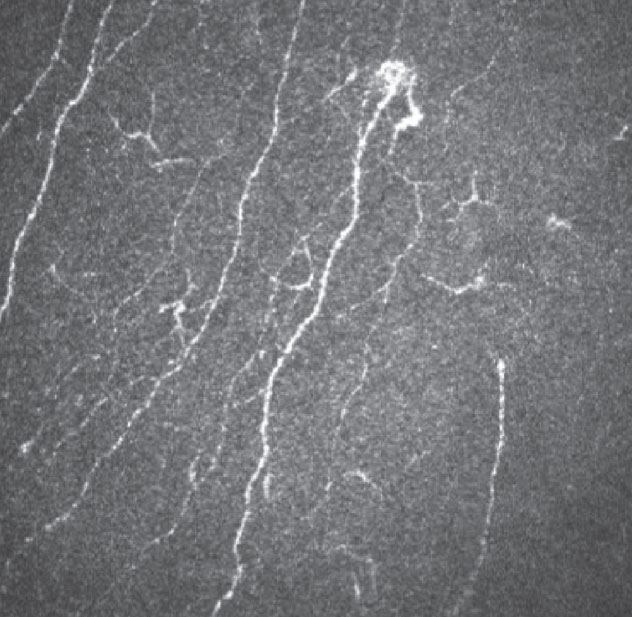 |
| It is essential to know and understand the age-related changes that present in the cornea to be able to differentiate pathological changes from physiological degenerative processes during aging. Click image to enlarge. |
Like most other parts of the body, the eye is considerably vulnerable to aging’s effects on numerous functions and structures. Though the lens and retina may be the structures most commonly associated with age-related changes, the cornea goes through significant changes as well. Understanding these effects is critical to establishing standardized reference values adjusted for age, which would allow clinicians to differentiate the effects of advancing age and those caused by pathological degenerative corneal disease. To help with this research, a recent study looked at the impact of age specifically on corneal nerves and epithelial cells and documented their findings in the journal Cornea.
The cross-sectional, observational study involved 281 eyes of 143 healthy participants from the Singapore Eye Research Institute with no ocular surgery history, previous infectious keratitis, glaucoma treatment, corneal or ocular surface disease, diabetes or autoimmune disease. The study subjects were divided into six age groups: 20 to 29 years, 30 to 39 years, 40 to 49 years, 50 to 59 years, 60 to 69 years and 70 years or older. Using in vivo confocal microscopy, the researchers evaluated a total of 7,025 corneal nerve images and 4,215 corneal epithelial images from the cohort.
The team reported a declining trend with advancing age in all seven nerve parameters they quantified. These included: (1) corneal nerve fiber length and (2) density, (3) corneal nerve branch density, (4) corneal nerve total branch density, (5) corneal nerve fiber area and (6) width and, finally, (7) corneal nerve fractal dimension.
The most significant decrease was shown in both corneal nerve fiber length and density in subjects aged 65 years or older compared with those younger than 65 (10.2mm/mm2 vs. 9.9mm/mm2 for corneal nerve fiber length; 15.8 fibers/mm2 vs. 14.4 fibers/mm2 for corneal nerve fiber density). Corneal nerve fractal dimension also demonstrated a borderline significant decrease in participants older vs. younger than 65.
The researchers found a similar declining trend with advancing age in all three corneal epithelial cell parameters that were quantified, which included cell density, average size and circularity. Of these, epithelial cell circularity was most significantly lower in participants 65 and older compared with the younger age groups (0.722µm2 vs. 0.714µm2).
In their Cornea paper, the study authors discuss some of the known connections between aging and the ocular surface that might help to explain the age-related changes observed in the cornea and epithelium.
“Corneal nerve endings transduce stimuli into nerve signals that are directly responsible for physiological processes fundamental to ocular surface homeostasis,” they noted. “Aging leads to the disruption of tear mechanisms including lower tear volume, tear flow, meniscus height of tears, thickness of lipid layer and tear composition. Accordingly, studies have observed a decrease in tear film break-up time and Schirmer test values and an increasing prevalence of dry eye disease in the aging population.”
While this study’s purpose was not to identify the underlying molecular mechanisms behind the phenomenon, the authors note that future studies will be conducted to investigate the association of advancing age with deteriorating corneal nerve and epithelial cell parameters. Additionally, they point out that age-adjusted reference values may be influenced by race, so research involving a more racially diverse cohort is still needed.
The team concluded in their paper, “We have demonstrated that advancing age is associated with reduced corneal nerve plexus and alterations of epithelial cell characteristics. These aging effects should be considered when evaluating patients with corneal neuropathy.”
Chin JY, Liu C, Lee IXY, et al. Impact of age on the characteristics of corneal nerves and corneal epithelial cells in healthy adults. Cornea. 2023;00-1-10. |

